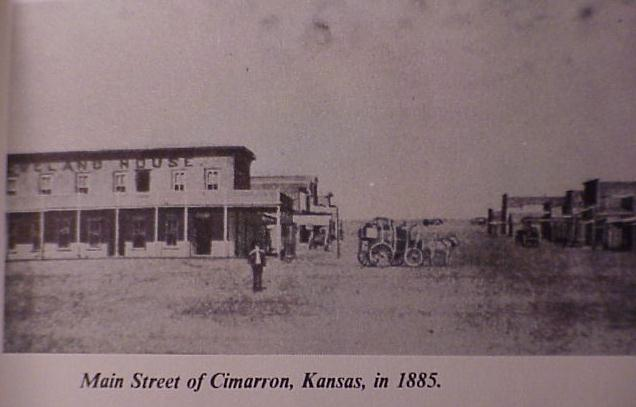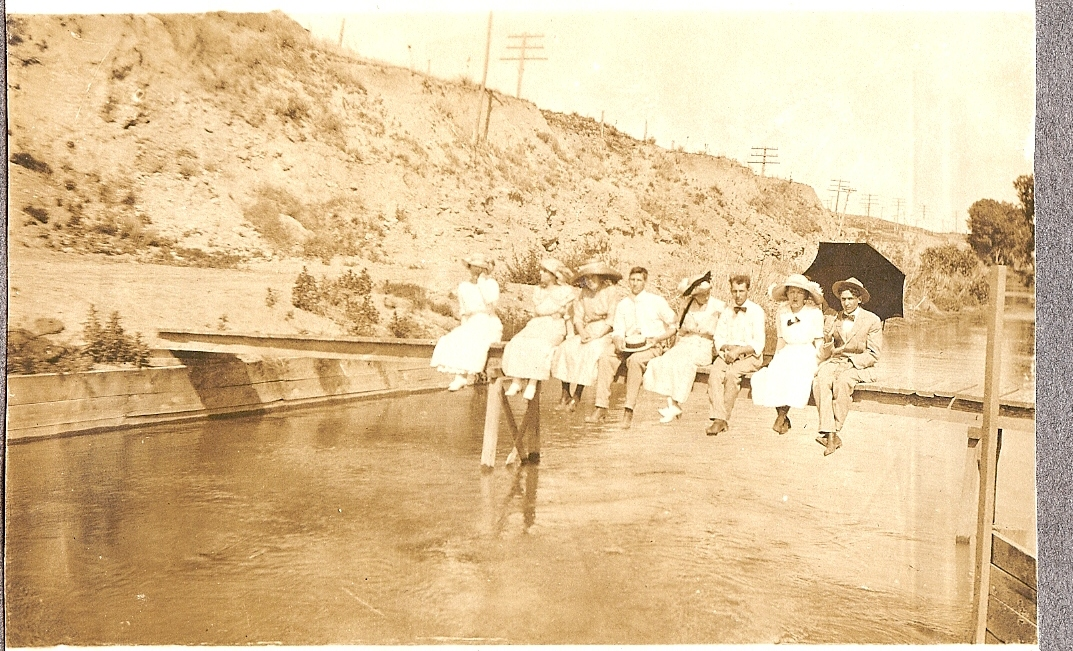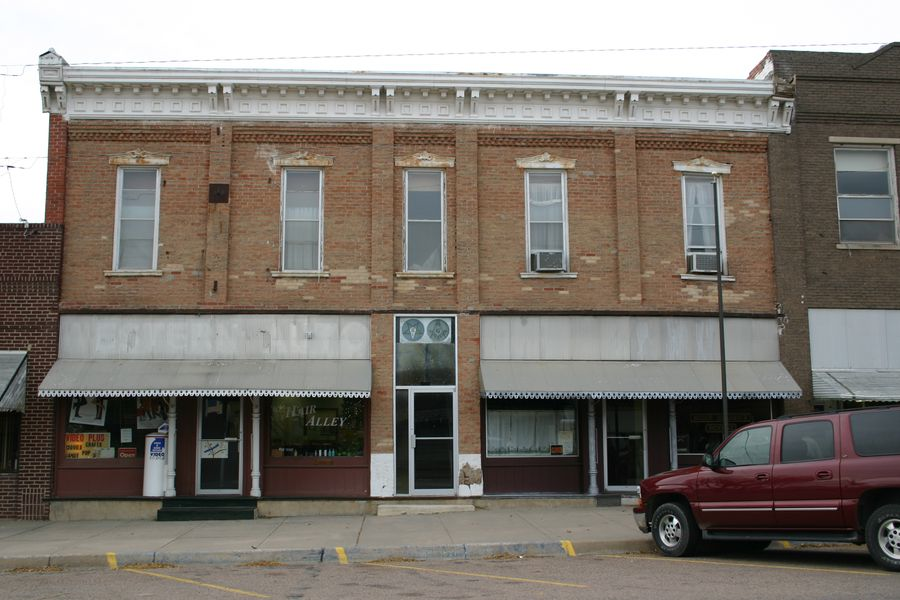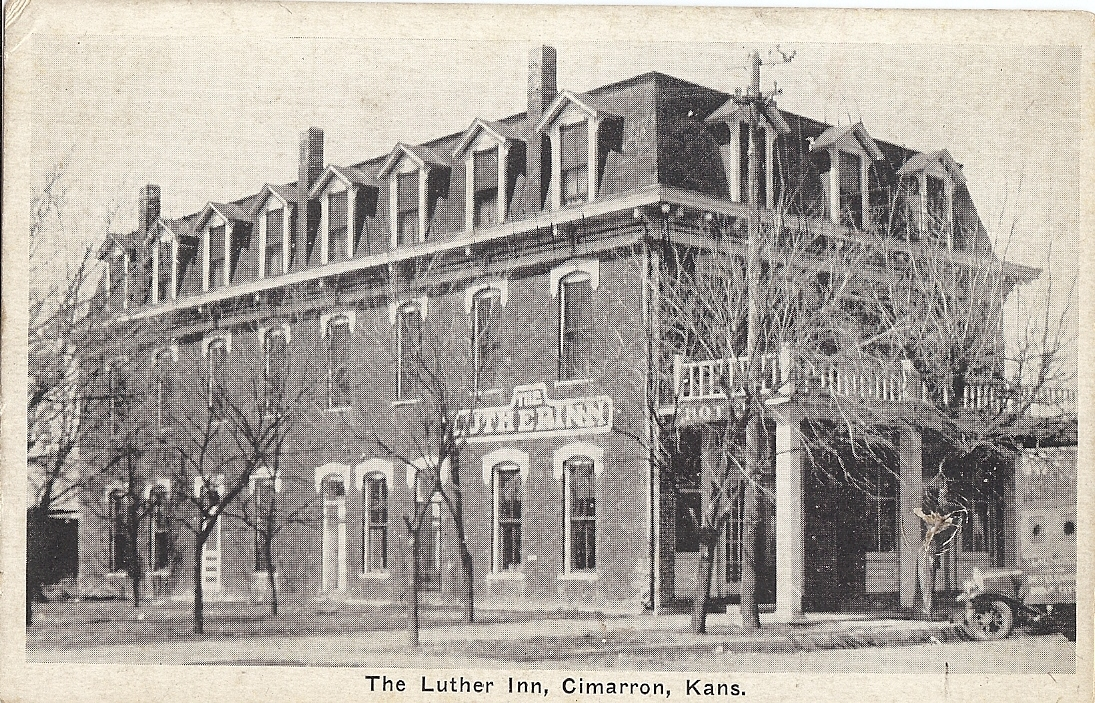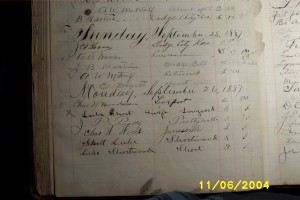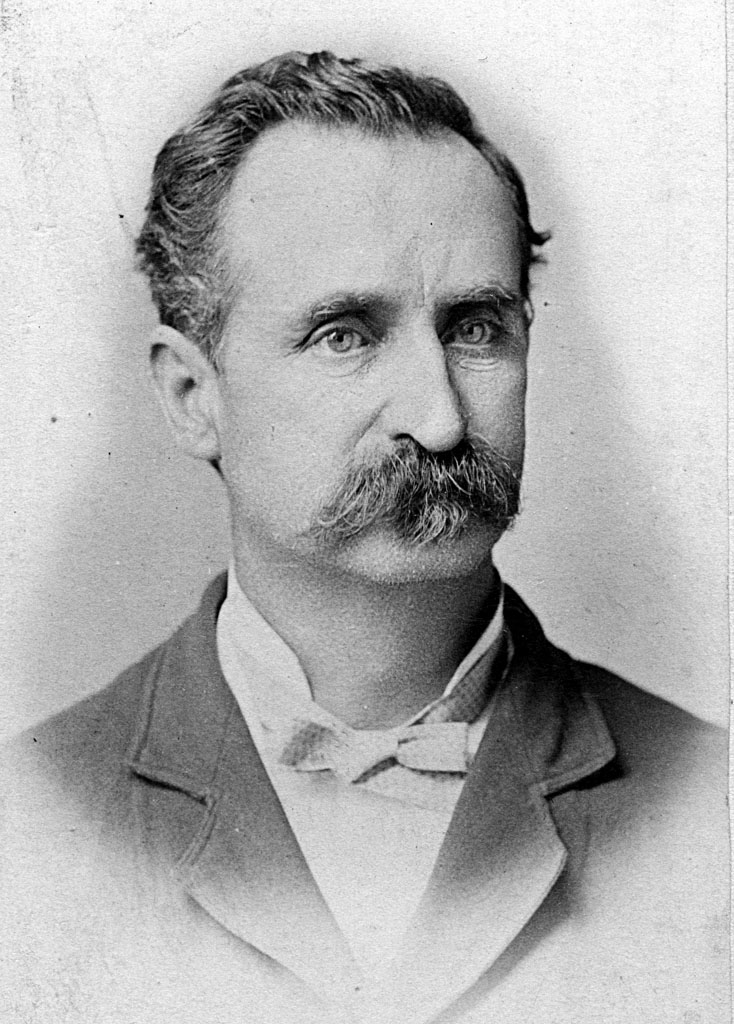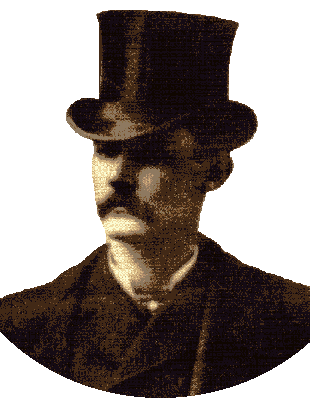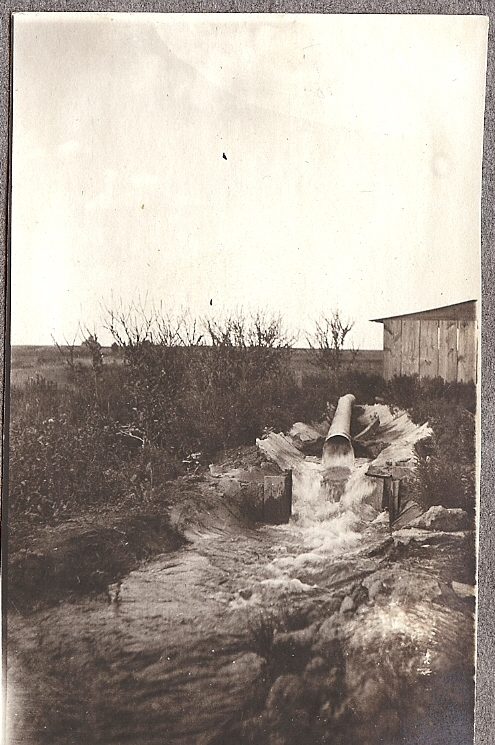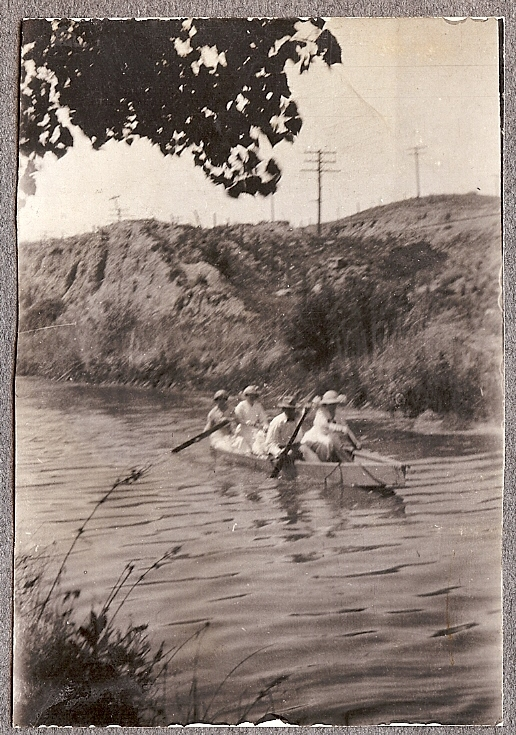History
Cimarron Hotel, est. 1886 as the New West Hotel
The Cimarron Hotel is an historic hotel (http://en.wikipedia.org/wiki/Cimarron_Hotel) located in Cimarron, a small town located in Southwest Kansas. Like many old timers, this 125+ year-old entity has seen much change over its life. And, most importantly, many of the stories of history that have unfolded up and down the Main Street of this Wild West town have infused the very walls and halls of the Hotel. Of course, modern- day travelers have added their stories. There’s the ghost on third floor, the laughter of hundreds of guests who played Whodunit, the smiles of many brides and grooms, of seniors having pictures taken – and, as well, there are the tears of those who came to stay to heal from passage through troubled times. Owning the Hotel is owning a piece of each of the stories seen and heard within.
Cimarron, settled in 1878, was a notorious branch point on the historic Santa Fe Trail. At Cimarron, the trail divided, one branch heading southwest, the other following the Arkansas River to Bent’s Fort (near LaJunta, Colorado), then south over Raton Pass. Cimarron is the first town west of Dodge City on the Atchison, Topeka, and Santa Fe railroad line.
Although it was platted in 1878 and occupied even before that, Cimarron was not incorporated as a town until 1885. The boom days were going full tilt at that time. In April of 1886, a local paper, the Jacksonian, reported that “such is the crowded condition of our hotels and boarding houses that persons reaching here on the midnight trains have to sit up until morning, every available foot of sleeping space from cellar to garret being occupied.”
www.kansasmemory.org, Kansas State Historical Society, Copy and Reuse Restrictions Apply
Perhaps inspired by the “boom-era fever,”Nicholas B. Klaine built the New West Hotel in 1886, at an investment of $15,000. With the completion of the first floor of the three-story brick structure, he launched the New West Echo, a Republican newspaper. The newspaper occupied the north half of the first floor of the Hotel. The Hotel opened as the New West Hotel and operated as one of seven lodging facilities serving pioneers who needed to come to town for supplies or for cowboys and ruffians who literally wanted to “get the heck out of Dodge”.
It has long been rumored that the original Cimarron Hotel register holds the signature “Bat Masterson and whore” but several reviews have not verified any such entry by the famous gunfighter. That being said, one of Bat’s best friends, Luke Short, (http://lukeshort.info/) one of the original Dodge City Front Street gunfighters, is present in the original register. An 1887 entry shows “Luke Short and wife” with “Lukeville” listed as the city of residence.
Luke Short was known to be a man of great humor. However, several years prior to this entry, Short was engaged in an altercation with the New West Hotel’s owner Judge Nicholas Klaine. The circumstances surrounding the altercation have come to be known as “the Dodge City Wars,” or “the Saloon Wars.” It is speculated that Short’s presence in Cimarron may have coincided with the timing of a lawsuit designed to reclaim damages.
www.kansasmemory.org, Kansas State Historical Society, Copy and Reuse Restrictions Apply
The worst recorded blizzard in the history of Kansas occurred in January of 1886. Despite significant damage to the cattle in the area, Klaine proceeded with construction of his hotel. Some estimates suggest that as many as 85% of the cattle in the area either died in or were weakened and died later, devastating the area’s economy. In the early 1890s, the Hotel was advertised as a sanitarium wherein patients with respiratory disorders found relief in the “balmy air” of Southwest Kansas which was deemed, according to a promotional brochure of the era, to result from the fact that the New West was located at an elevation neither as low as sea level nor as high as the neighboring Rocky Mountains.
Kansas State Historical Society, Copy and Reuse Restrictions Apply.
Asa Soule, Dodge City millionaire developer, hailed from Rochester, New York. Familiar with the commercial and industrial success of the Erie Canal, he signed on to a venture to build the Eureka Irrigating Canal through Gray County. Today, the Cimarron Hotel sits on Canal Street. Photos show the proximity of “Soule Canal” to the stately structure. The Soule Canal was the largest irrigation project ever attempted in Kansas (Hutchinson News, 4 March 1909). After construction began in April 1884, it took two years, sixty horses, 150 men and between $250,000 and $1,000,000 to dig the ninety-six-mile channel. Men were paid $1.50 per day, more than the average daily wage for farm laborers at the time. Men with horse teams were paid $2.50 per day. The “small army” of men progressed at a brisk pace of two miles per week, completing the bulk of the project by spring 1886.
Kansas State Historical Society, Copy and Reuse Restrictions Apply.
By the early 1890s, the boom-era conflict arose to the level of survival. The Kansas State Historical Society recounts that in 1887, three Gray County “towns were vying for the position: Montezuma, Ingalls, and Cimarron. Millionaire Asa T. Soule persuaded the residents of Montezuma to withdraw their petition for county seat and vote for Ingalls. To accomplish this, Soule promised to build Montezuma a railroad and freely dispersed checks ranging from $100 to $500 to its residents. In spite of Soule’s efforts, Cimarron was the winner of the election. In validating the election returns, the Kansas Supreme Court ordered the county records to be moved to Ingalls. On the morning of January 12, 1889, Fred Singer, one of the most famous of the Dodge City gunmen lounged into Cimarron. He called at the courthouse but the safe was closed. Later he called again. About eleven o’clock, the clerk opened the safe. Singer went downstairs and signaled with a handkerchief. A friend on the edge of town hung a saddle blanket on the clothesline. Out on the prairie a watcher relayed the signal. About eleven-thirty a lumber wagon drove in on the Ingalls road, which at that time was just north of the Cimarron Hotel. Concealed behind the wagon’s high box were a number of men, including several Dodge City gunmen deputized by Sheriff-elect Reynolds, not present because he had been wounded while chasing rustlers. They unloaded quickly in front of the courthouse, and four went upstairs to get the records. The rest stayed on the street below with weapons ready”.
Upstairs, Watson and the others drew guns and demanded the records. Riley asked for time to let his two children reach safety. They had come to the office that day as they sometimes did, to stay till their father went home to dinner. The children left, then Riley asked for a receipt before giving up the books. This refused, Riley delayed further by saying he had some private papers to sort out. The Ingalls men started carrying the records downstairs. In the meantime, news of the raid swept through town. As the last of the books were being loaded, Cimarron men had arrived and taken cover inside and behind buildings, and bullets began to fly from both sides of the street. Who fired the first shot was a matter of dispute. J. W. English of Cimarron, was killed instantly, and Jack Bliss and Ed Fairhurst were wounded. After the fray was over, F. M. Luther discovered that a bullet had gone through his derby hat and clipped off a lock of hair.
Of the Ingalls crowd, Ed Brooks of Dodge City, and George Bolds, and Charley Reicheideffer, owner and driver of the wagon, were wounded. The Ingalls men withdrew to the bridge over the ditch, picked up their wounded, and left with Cimarron riders in pursuit. The pursuers were forced to stop by fire from rifles and a buffalo gun. Three Ingalls men, unable to reach the wagon, retreated upstairs to the clerk’s office. Shots were fired at them through the floor from the grocery store below. Late in the afternoon, after waving a white flag from the window, the marooned men were found perched on the large iron safe to escape the bullets. Escorted under guard to the train, the prisoners were returned to Ingalls, where Sheriff Reynolds promptly turned them loose. (http://www.cimarronks.org/Community.html) (http://www.kshs.org/kansapedia/county-seat-wars/12022 ) (http://www.prx.org/pieces/2537-the-gray-county-seat-war )
Although cyclical economic depressions and droughts followed throughout both the late 19th and 20th Centuries, the Hotel has stood the test of time, providing lodging and food for guests and friends alike. Klaine operated the Hotel under several managers until 1902 when Klaine sold the hotel to the Luther family and moved back to Warrensburg, Missouri. Prior to that, the hotel was promoted as the New West Sanitarium. A brochure published in the early 1890s cites Cimarron’s climatic advantages over Florida or Colorado stating that the altitudes of each “aggravate conditions alleviated by the average annual temperatures of 53 degrees Fahrenheit and the lack of malarious conditions.” Of course, testimonials included a reminder that “Western Kansas presents a favorable condition for the pulmonary invalid in being the mean between sea level and high elevation.”
Despite the difficult conditions, Klaine continued to operate the Cimarron Hotel under several managers until 1902. In that year, the New West Echoceased publication. Klaine sold the hotel to the Luther family, who changed the name to “The Luther Inn.” The Luther family owned the hotel until 1947, when they sold it to Elsie Barlow, a long-term employee of Luther Real Estate. Mrs. Barlow changed the name to “the Cimarron Hotel,” and it remained in her hands until the early 1970s. After short-terms under three owners, the Cimarron Hotel was purchased by the current proprietor in 1977. Committed to stewardship of the building and its history, the current owner has accomplished substantial renovations. Under her hand, the hotel has housed a popular restaurant, lodging, and a private home for the owner, her family, students, and guests. The building was added to the National and State Registers of Historic Places http://www.kshs.org/p/national-and-state-registers/14635 in 1983. The restaurant closed in 1999. Since that time has housed a popular quilt shop, an antique shop and meeting space for community groups. Today, the owner occupies the upper floors, and the main floor hosts two studio apartments and a parlor suite to serve guests.
